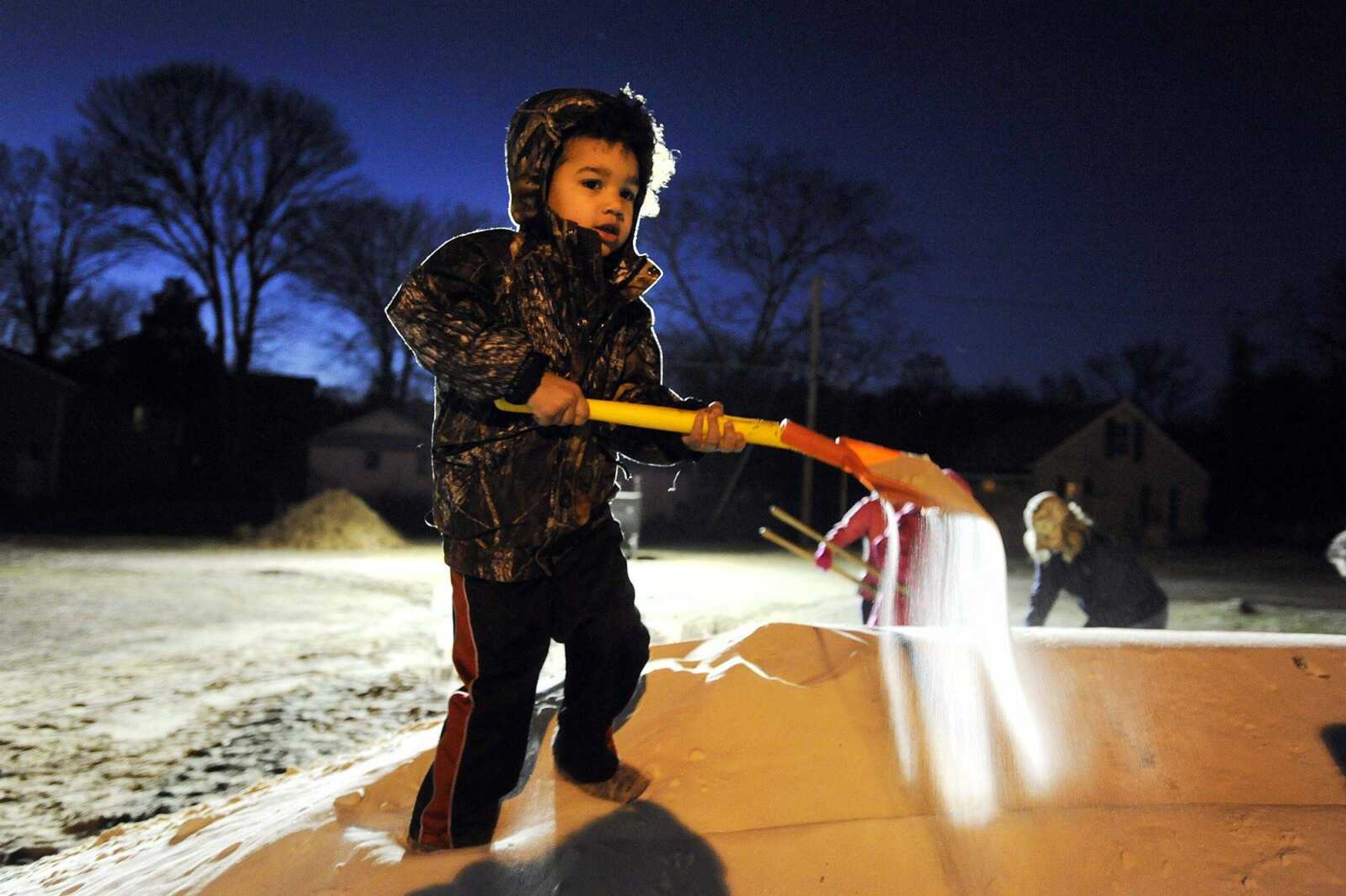River slowly retreats after setting record in Cape
The Mississippi River crested in Cape Girardeau late Friday, marking the highest crest for a flood event in the city's history. Reports from the National Weather Service showed the river cresting at 48.86 feet about 10 p.m. Friday. The previous high-water mark was 48.49 feet, set in 1993...
The Mississippi River crested in Cape Girardeau late Friday, marking the highest crest for a flood event in the city's history.
Reports from the National Weather Service showed the river cresting at 48.86 feet about 10 p.m. Friday. The previous high-water mark was 48.49 feet, set in 1993.
Earlier in the week, forecasters predicted a crest of 50 feet today, but the water has been receding slowly since Friday night and is expected to continue.
Cape Girardeau and several surrounding areas still are experiencing what the National Weather Service considers "major flooding." Hydrologic forecasts indicate the river won't go below "major" flooding stage -- which is 42 feet -- until Wednesday evening. Flood stage for the river at Cape Girardeau is 32 feet.
Houses and businesses in low-lying areas were flooded, as well as several roadways.
Richard Knaup, Cape Girardeau County emergency management director, said the most severe flooding was in the northern section of Cape Girardeau's Red Star district.
City of Cape Girardeau public information specialist Jessica Sexton said the number of houses and businesses affected was 25 to 30 Friday, the latest available account.
Although the river is expected to fall much more quickly than the 1993 crest, emergency management personnel still are faced with a water level that is expected to remain high for several days.
"Crews continue staying vigilant and inspecting wall and levee structures several times daily while the water remains elevated," Sexton wrote on behalf of the city. "The floodwall gates in Cape Girardeau continue to remain closed. Both pumping stations remain operating."
Cape Girardeau's public works department has given out about 22,000 bags for sandbagging, and Sexton said emergency services have helped several people out of their homes near the Red Star area.
A Red Cross emergency shelter was established Tuesday at the Osage Centre in Cape, as well as a pet shelter run by the Humane Society in the 4-H building in Arena Park.
Shelter manager Margaret Makins said fewer have needed to use the shelter than organizers thought.
"We've not had the impact we were expecting, but we just wanted to be opened for them," she said.
The shelter can house more than 100 people, but only about six people have stayed overnight. The shelter's kitchen regularly has served about 20 people during meals, and Makins said Red Cross volunteers are constantly available.
Knaup said area infrastructure improvements helped keep the number of displaced residents low, citing buyout programs in the Red Star district and Dutchtown as part of the reason the area is better prepared for the flooding than in 1993. As part of the programs, some homeowners' properties were bought out, and the tract was converted into grassland.
"Because of the mitigation that was done, because of the '93 flood, we were more prepared for this flood," he said.
The added severity of the current event, however, has caused flooding in areas once considered to be low-risk.
"I don't want to minimize damage," he said. "Because we reached historic heights in places that were never threatened before, but due to the historic nature of the flood, were. If you're the one homeowner that got his house flooded, it's as bad as the '93 flood; we just didn't have the larger numbers this time."
Knaup said one of the most concerning aspects of the situation is having to keep spectators a safe distance from the water. His office is requesting the National Guard to work in concert with the Cape Girardeau Sheriff's Department to monitor the Diversion Channel, which Knaup said is hazardous.
"If someone gets up on the bridge and falls off, we don't want to have to do a water rescue," he said. "We're getting way too many sightseers up on the levee and the Diversion Channel."
Officials won't be able to tally the damage until the water subsides, but Knaup remains optimistic.
"We are going to have damage, and it will be in the hundreds of thousands of dollars," he said.
"But if things were like they were in 1993, we would be in the millions of dollars."
Cape Girardeau County still may see more than a million dollars in damage, he said. If it rises to that point, the area may be declared a federal disaster area.
"For us to get a federal disaster declared, FEMA will come in and go with county officials to view damage that was done to streets, ditches, bridges, gravel roads that may have washed away during the flash flooding at the beginning of the event, wells, water systems, water treatment systems if they were damaged and other public infrastructure," Knaup said.
tgraef@semissourian.com
(573) 388-3627
Connect with the Southeast Missourian Newsroom:
For corrections to this story or other insights for the editor, click here. To submit a letter to the editor, click here. To learn about the Southeast Missourian’s AI Policy, click here.









